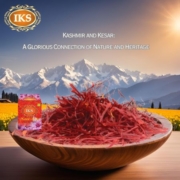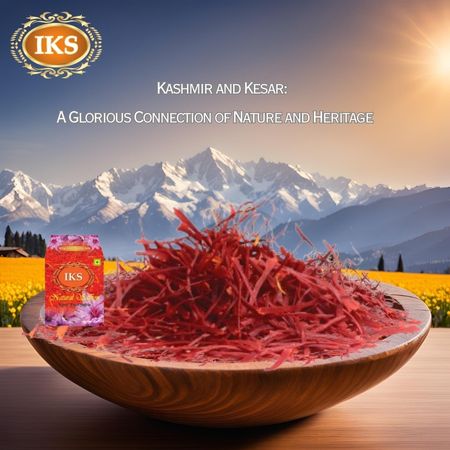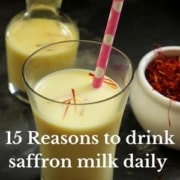Kashmir and Kesar: A Glorious Connection of Nature and Heritage
Kashmir and Kesar – Introduction
Kashmir and Kesar – Kashmir, often referred to as “Paradise on Earth,” is renowned for its breathtaking landscapes and rich cultural heritage. Nestled in the northern part of India, this region boasts an array of natural beauty, complemented by its historical significance and vibrant traditions.
Among the numerous treasures that Kashmir offers, Kesar (saffron) stands out as one of the most esteemed products. This article delves into the unique relationship between Kashmir and Kesar, exploring its cultivation, significance, and the socio-economic impact it has on the region.
Experience the Essence of Kashmir! Click here to buy authentic Kashmir Kesar online and elevate your culinary creations with this exquisite spice.
1. The Geography of Kashmir
Kashmir is characterized by its stunning topography, with snow-capped mountains, lush valleys, and serene lakes. The region’s climate, which includes hot summers and cold winters, provides an ideal environment for various crops. The famous Kashmir Valley lies between the Pir Panjal and the Zanskar mountain ranges, creating a natural haven for agriculture and horticulture.
2. The Significance of Kesar
Kesar, or saffron, is derived from the flower of Crocus sativus, commonly known as the saffron crocus. The vivid crimson stigmas of the flower are harvested and dried to produce saffron, which is highly prized for its flavor, color, and medicinal properties. Kesar is often referred to as “red gold” due to its high market value and is one of the most expensive spices in the world.
Taste the Tradition! Don’t miss out on the rich flavor of Kashmir Kesar. Order online now and bring the taste of paradise to your kitchen!
3. Cultivation of Kesar in Kashmir
3.1 Historical Background – The cultivation of saffron in Kashmir dates back over 2,000 years. The region is believed to be the original home of saffron, and its unique climate and soil conditions contribute to the exceptional quality of Kashmir Kesar. The Mughal emperors, who ruled the region in the 16th century, played a significant role in promoting saffron cultivation, recognizing its value for trade and culinary use.
3.2 Traditional Cultivation Practices – Kesar is primarily grown in the Pampore region of Kashmir, which is often referred to as the “Saffron Town.” The flowers bloom in the autumn months of October and November. Farmers employ traditional methods of cultivation, including hand planting of corms (the underground storage organ of the plant) and manual harvesting, which requires skilled labor. Each flower produces only three stigmas, making the harvesting process labor-intensive and time-consuming.
3.3 Challenges in Cultivation – Despite its lucrative nature, saffron cultivation faces several challenges. Climate change, with shifting weather patterns, has affected the flowering season and yield. Additionally, the influx of high-yield hybrid varieties has raised concerns about the preservation of traditional Kashmiri saffron. Farmers are also grappling with issues related to land fragmentation and the lack of modern agricultural techniques.
4. The Cultural Significance of Kesar
4.1 Culinary Uses – Kesar is an integral part of Kashmiri cuisine, adding a distinct flavor and vibrant color to dishes. It is a key ingredient in traditional recipes such as “Kashmiri Pulao,” “Gulab Jamun,” and “Kesar Milk.” The use of saffron in cooking not only enhances the taste but also signifies hospitality and celebration.
4.2 Medicinal Properties – In addition to its culinary uses, Kesar is celebrated for its medicinal properties. It is believed to have various health benefits, including improving mood, boosting immunity, and acting as an antioxidant. Traditional Ayurvedic practices have long incorporated saffron for its therapeutic effects.
4.3 Festivals and Traditions – Kesar is often associated with various cultural rituals and festivals in Kashmir. The harvesting season is celebrated with traditional songs and dances, reflecting the deep-rooted connection between the people and their land. The Saffron Festival, held annually in Pampore, showcases the cultural heritage of saffron farming and promotes tourism in the region.
Support Local Farmers! By buying Kashmir Kesar online, you’re not just getting a premium product—you’re also supporting the livelihoods of local farmers. Shop now!
5. Economic Impact of Kesar
5.1 Source of Livelihood – Saffron cultivation is a vital source of income for many families in Kashmir. It provides employment opportunities, especially for women, who play a significant role in the harvesting process. The income generated from Kesar cultivation contributes to the overall economy of the region.
5.2 Export Potential – Kashmir and Kesar holds a Geographical Indication (GI) tag, ensuring its exclusivity and protecting its reputation in global markets. The demand for authentic Kashmiri saffron continues to rise, with international markets recognizing its superior quality. This presents an opportunity for local farmers to expand their reach and increase profitability.
5.3 Challenges in Marketing – Despite its potential, the saffron market faces challenges, including competition from cheaper imported saffron and issues related to adulteration. To combat these challenges, efforts are being made to promote the authenticity of Kashmiri saffron and educate consumers about its distinct qualities.
6. Preservation Efforts
6.1 Government Initiatives – The government of Jammu and Kashmir has taken several initiatives to promote saffron cultivation and support farmers. This includes providing training programs, financial assistance, and improving irrigation facilities to enhance productivity.
6.2 Research and Development – Research institutions are working on developing sustainable farming practices and improving the quality of saffron. This includes exploring innovative techniques for pest control and soil management to ensure the long-term viability of saffron cultivation.
6.3 Community Engagement – Local communities are being encouraged to participate in the preservation of traditional saffron farming practices. By promoting awareness and education, efforts are being made to ensure that future generations continue to value and cultivate this unique crop.
Conclusion
The connection between Kashmir and Kesar is a beautiful representation of the region’s natural bounty and cultural richness. Saffron cultivation not only contributes to the economy but also preserves the traditions and heritage of Kashmir. As the world recognizes the exceptional quality of Kashmiri saffron, it is essential to address the challenges faced by farmers and promote sustainable practices. By doing so, we can ensure that this “red gold” continues to thrive and enrich the lives of the people of Kashmir for generations to come.









Leave a Reply
Want to join the discussion?Feel free to contribute!